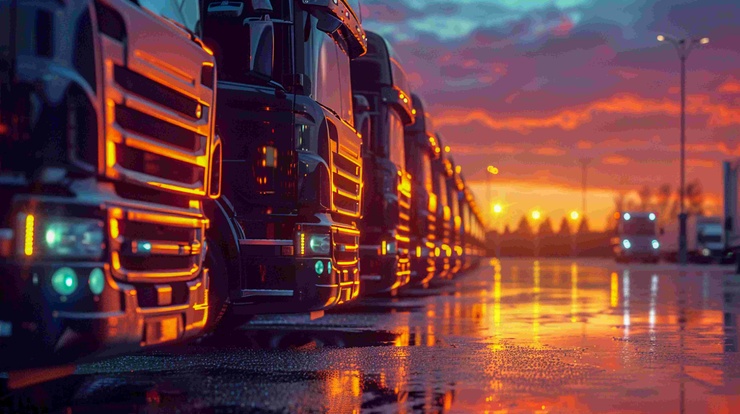- Last-Mile
Last Mile E-commerce Significance and Challenges in Delivery Operations
Online shoppers now exercise precise control over their buying journey, elevating the delivery experience into a decisive brand differentiator. The acceleration of last mile e-commerce has heightened expectations for speed, transparency, and flexibility; consequently, retailers feel compelled to deploy technology that offers predictable delivery windows.
Moreover, these systems must also provide real-time status updates to satisfy customer demands. Cost sensitivity remains high. According to a survey, 90% of consumers abandon carts when standard items carry unexpected shipping fees. Therefore, the importance of last mile delivery in protecting conversion cannot be overstated.
Modern last mile delivery e-commerce platforms tackle these pressures by unifying dynamic slot booking with routing intelligence. As a result, they create a self-service operating model that safeguards margins and strengthens loyalty.
Let us learn how the industry's best practices and emerging trends can redefine competitive advantage across global retail landscapes.
What Today's Online Shoppers Demand
Shoppers are not shy about switching brands when deliveries disappoint. A retailer that hides shipping costs or misses arrival times may lose not only one sale but also the next ten. For that reason, a modern last mile e-commerce operation must turn complex routing decisions into clear, flexible promises.
- Speed versus Cost Trade-offs
Many consumers appreciate same-day service, yet most will settle for two-day or economy shipping if the price difference is spelt out upfront. Tiered delivery options, each showing an exact fee and date, respect the shopper’s budget while showcasing the importance of last mile delivery in maintaining transparency. By presenting every tier side by side, merchants allow buyers to choose urgency when it truly matters and save a few dollars when it does not.
- Reliability and Predictable ETAs
Accuracy often trumps outright speed. A reliable three-day arrival inspires more confidence than a “maybe tomorrow” guess. Platforms that feed live traffic, weather, and driver data into their ETA engines underpin dependable last mile e-commerce experiences. Consistency also cuts inbound support calls because customers aren’t left wondering whether the van is lost.
- Choice of Delivery Options and Self-service
Control is now part of the product. Shoppers want to route their orders to parcel lockers near the office, reschedule a Tuesday drop to Friday evening, or select a window that groups deliveries in their neighborhood. Self-service tools that let buyers make these adjustments without calling an agent highlight the customer-centric spirit of advanced last mile delivery e-commerce solutions.
Key Pain Points Slowing Down E-commerce Deliveries
Even large, well-funded operations suffer from a handful of recurring friction points. Addressing them is essential to protect margins and retain loyalty.
- Unexpected Shipping Fees and Cart Abandonment
Surprise surcharges trigger cart exits faster than any competitor promotion. Integrating live rate engines into the checkout flow keeps numbers predictable. When fees match expectations, last mile e-commerce works with sales rather than against them.
- Missed Windows and Delivery Uncertainty
One late driver can unravel hard-earned trust. Robust slot management and real-time re-routing illustrate the importance of last mile delivery in preserving brand equity. Every missed window carries hidden costs, rescheduling labor, fleet mileage, and sometimes refunds.
- Visibility Gaps Driving "Where is My Order?" Calls
When tracking shows “Label created” for two days, customers reach for the phone. Full scan chains, GPS breadcrumbs, and push alerts throughout the last mile e-commerce journey keep buyers informed, easing pressure on contact centers.
Core Capabilities of a Best-in-class Delivery Platform
Retailers evaluating technology should treat the following four capabilities as non-negotiable building blocks.
- Live Order Tracking and Proactive Notifications
Minute-level updates reassure shoppers that the merchant values the importance of last mile delivery. A timely “driver is ten minutes away” message can turn waiting time into preparation time rather than frustration. - Flexible Slot Booking and On-the-fly Rescheduling
Real capacity data feeds the scheduler, exposing only slots that crews can honor. Shoppers modify windows online rather than over the phone. This feature, standard in leading last mile delivery e-commerce suites, prevents overbooking and overtime spirals. - Urban-optimized Routing and Load Consolidation
Congestion-aware algorithms recognize bus lanes, delivery curfews, and low-emission zones. By clustering stops, merchants cut distance and carbon, reinforcing sustainable last mile e-commerce practices. - Seamless Customer Portals and Feedback Loops
One log-in should handle tracking, returns, and post-delivery reviews. Closing the loop gives operations teams data to refine processes and shows customers that their voice influences the next dispatch.
Emerging Trends in E-commerce Last Mile
The sector evolves quickly. Retailers who monitor new tactics are better positioned to adjust without costly overhauls.
- Green Delivery Options and Consumer Willingness to Pay
Research indicates that a sizable group will wait an extra day or add a small fee for a lower-emission route. Carbon calculators at checkout give shoppers that choice and underline the retailer's environmental commitment within last mile e-commerce workflows. - Micro-fulfillment Hubs and Pickup-drop-off Networks
Micro-fulfillment hubs and Pickup-drop-off Networks are core tactics in on-demand last mile delivery and last mile ecommerce models. Urban micro-warehouses shrink the radius between inventory and front doors, enabling bike couriers or sidewalk robots.
Pickup points at local stores reduce failed first attempts, saving fleet miles and aligning with efficient last mile delivery e-commerce models. - IoT-enabled Fleets, Automation, and Augmented Staffing
Temperature sensors, door alerts, and route telematics protect goods and uncover optimization opportunities. Autonomous lockers and drone pilots, while still emergent, hint at the next leap in last mile e-commerce effectiveness. - Subscription Models and Free-shipping Expectations
Membership plans raise the bar for customer experience yet tighten cost-to-serve ratios. Merchants need scalable, data-driven last mile e-commerce engines to fulfill unlimited shipping promises without eroding profit.
Enhance Your Last Mile Performance
Superior doorstep service is now the clearest path to repeat revenue, yet it hinges on a platform that turns routing data, customer preferences, and sustainability goals into one coherent flow. FarEye consolidates live tracking, slot flexibility, urban-ready routing, and carbon analytics inside a single low-code workspace, connecting seamlessly to existing order and fleet systems.
Retail teams gain precise ETAs and proactive alerts, drivers receive optimized manifests, and shoppers enjoy self-service control from checkout to feedback. This integrated stack reduces cart abandonment, missed windows, and WISMO calls while supporting green delivery commitments.
See how FarEye improves last mile e-commerce performance. Request a tailored assessment to evaluate slot booking, ETA accuracy, and routing gains for your business.
Sources:
FAQs
- Why is last mile e-commerce critical for conversion?
Because precise shipping costs, narrow delivery windows, and accurate ETAs reduce cart abandonment and “Where is my order?” (WISMO) calls, which improves conversion and customer lifetime value. Placing delivery options and fees early in checkout builds confidence and removes surprise charges. Clear post-purchase tracking and proactive alerts also lower anxiety, which encourages repeat purchases. - How quickly do merchants see improvements after implementing a modern last mile platform?
Impact tends to arrive in stages. Teams typically see fewer support tickets and tighter ETAs first, then improvements in cost per delivery and conversion. Actual pace depends on integration scope, data quality, process discipline, fleet mix, and driver adoption. Clear baselines, closed-loop KPIs, and regular playbook reviews help accelerate results.


